A History of Western Society AP®: Printed Page xxiv
How to Get the Most from This Program
| AP® European History Time Periods |
Percentage Tested |
| c. 1450–c. 1648 |
25% |
| c. 1648–c. 1815 |
25% |
| c. 1815–c. 1914 |
25% |
| c. 1914–Present |
25% |
Notice that this book is organized into four parts. These parts align to the four time periods established by the College Board for the AP® European History course. Each part and chapter of this text is structured around a common set of features designed to convey the rich story of Europeans while helping you develop the skills required to realize success on the AP® European History exam. Follow these steps to begin exploring history.
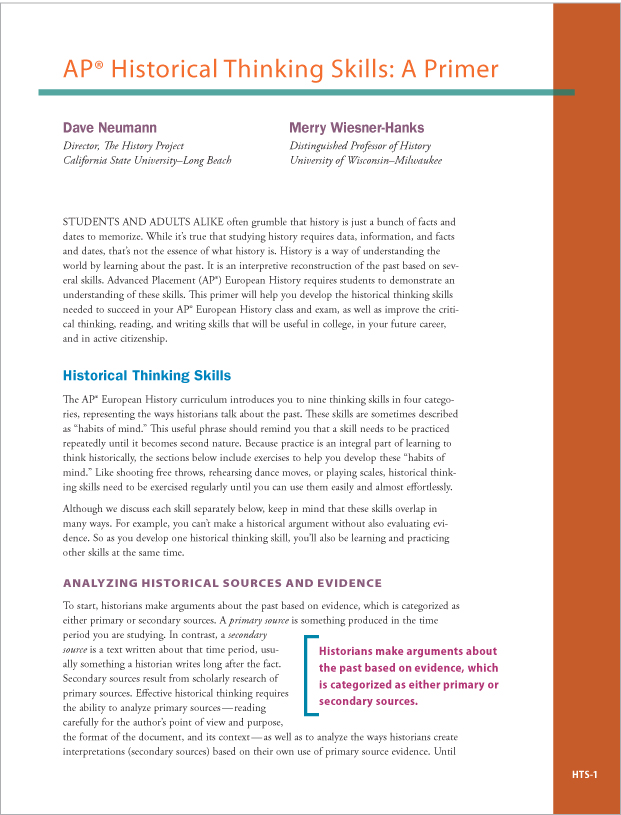
Before you begin reading the text, review AP® Historical Thinking Skills: A Primer. This section provides tips on reading this college-level text, suggestions for analyzing what you read, and recommendations for synthesizing the information and writing a cohesive argument — all skills you must demonstrate on the AP® exam. Gaining these insights at the beginning of the course will help you study more thoughtfully and efficiently.
Page xxv
Use the following features as you pre-read and prepare for your studies. Think of these tools like a coat rack, upon which you can hang the details of what you read in the chapters.
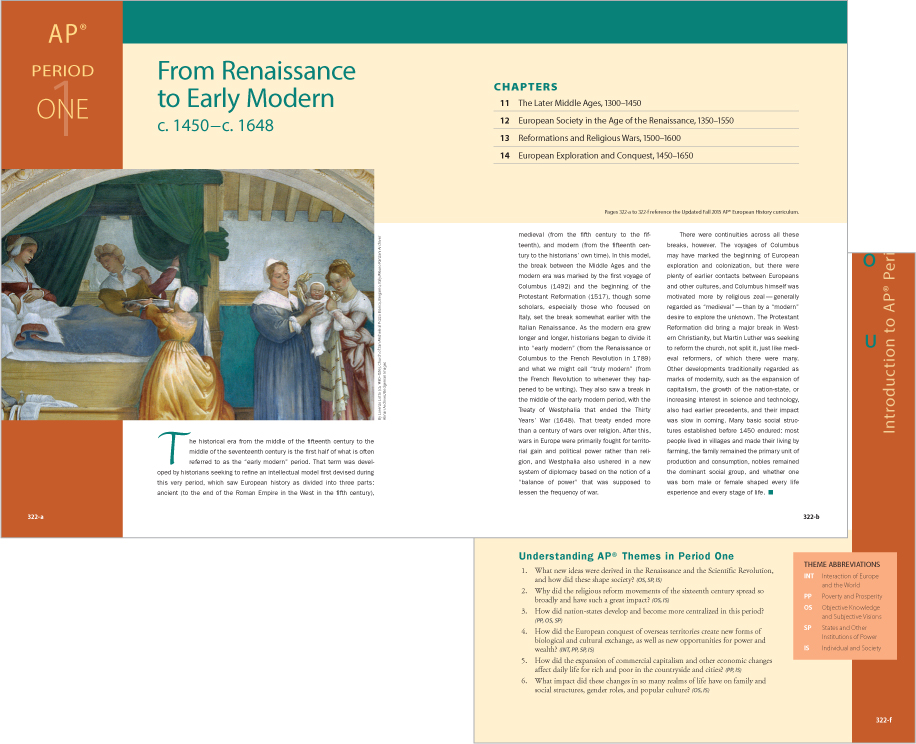
Begin your study of each part by reading the Period Opening Pages. They provide an overview of the concepts you will study in the time period. Then review Understanding AP® Themes for questions to keep in mind as you read.
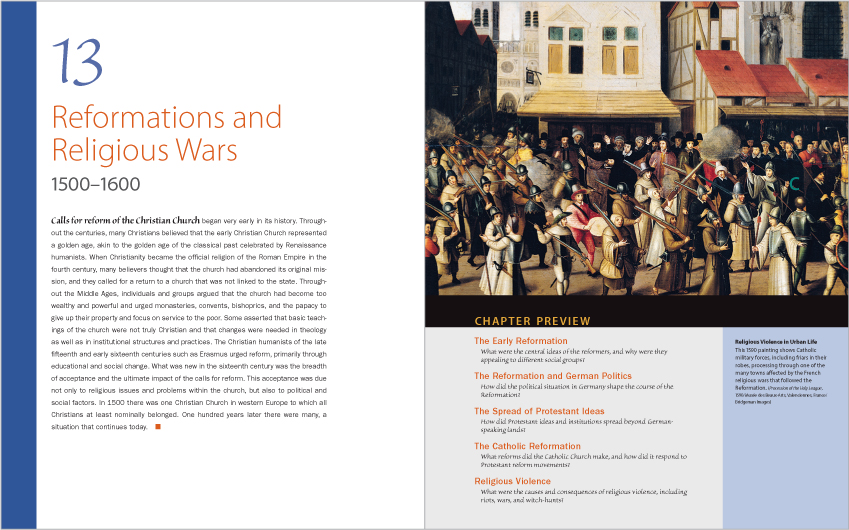
As mentioned in the AP® primer, begin each chapter with a quick pre-read. Chapter Introductions and Previews offer an overview and outline where you can insert details as you read the chapters.
Page xxvi
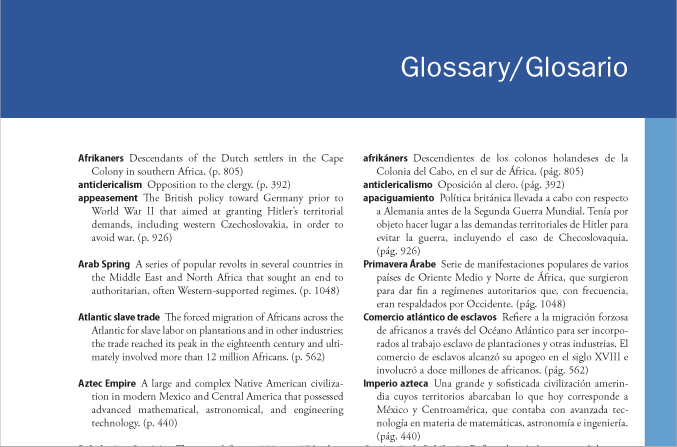
If Spanish is your first language, refer to the Glossary/Glosario at the end of the book for help with unfamiliar terms.
The following features will help you read and learn about important individuals, groups, and events in European history since 1300. Through these tools and the narrative of the text itself, you will acquire the knowledge and information required for the AP® exam.
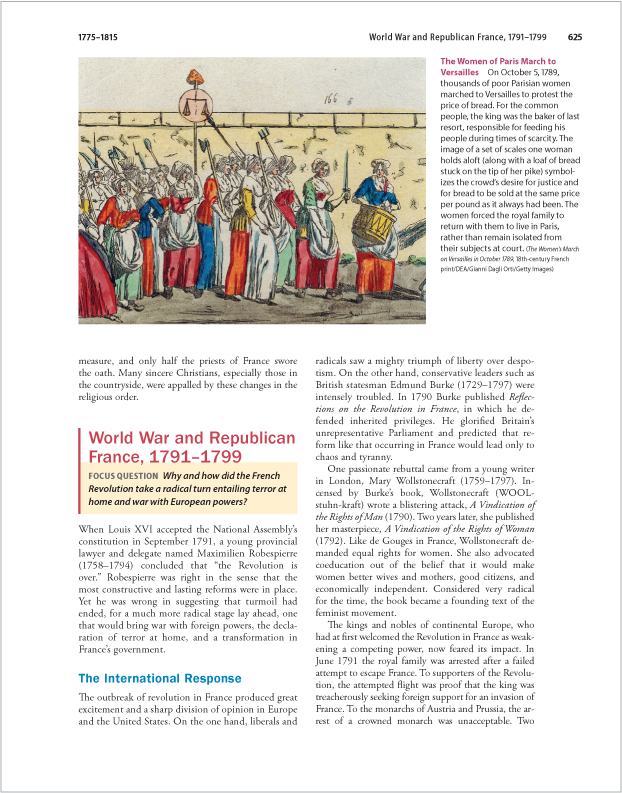
Focus Questions guide your reading and help you focus on what’s important.
Page xxvii
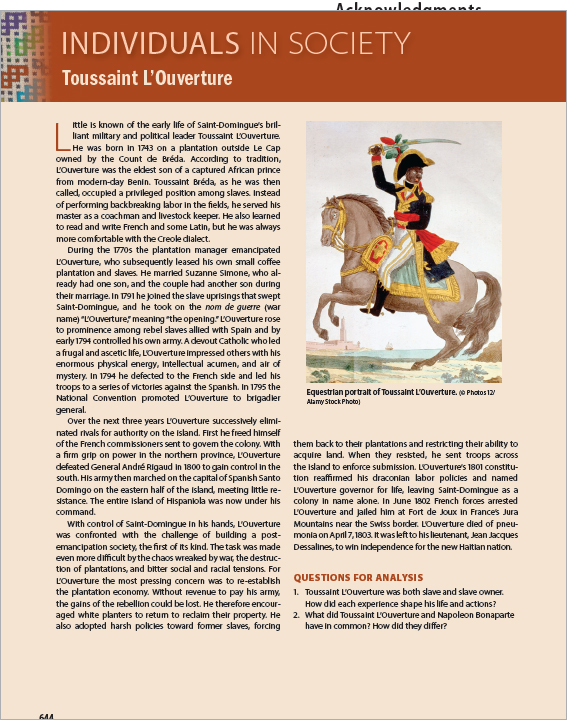
Read Individuals in Society features for biographical essays of individuals, both famous and obscure, some of whom may appear on your AP® exam.
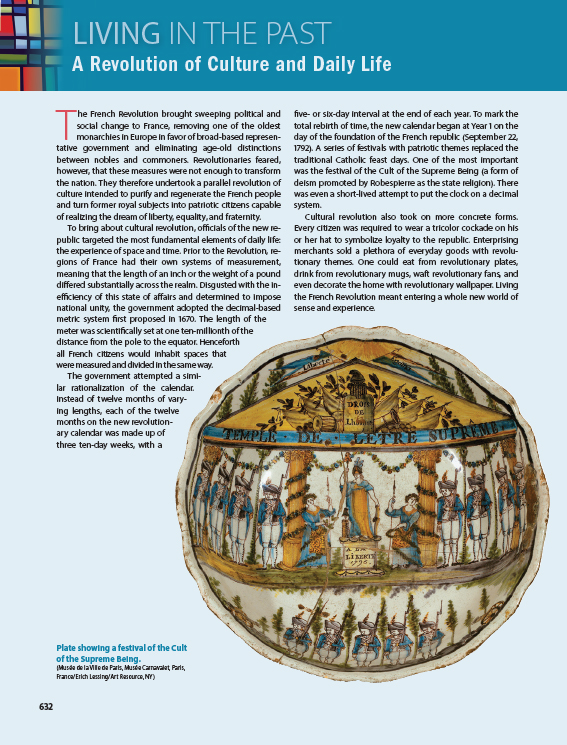
Examine the objects and images in Living in the Past and read the discussion to gain insight into how life in the past was both similar to and different from our lives today.
Page xxviii
As you become acquainted with the people, groups, and events of European history, you can start applying your knowledge. The following tools will help you analyze what you’ve learned and create your own arguments based upon evidence.
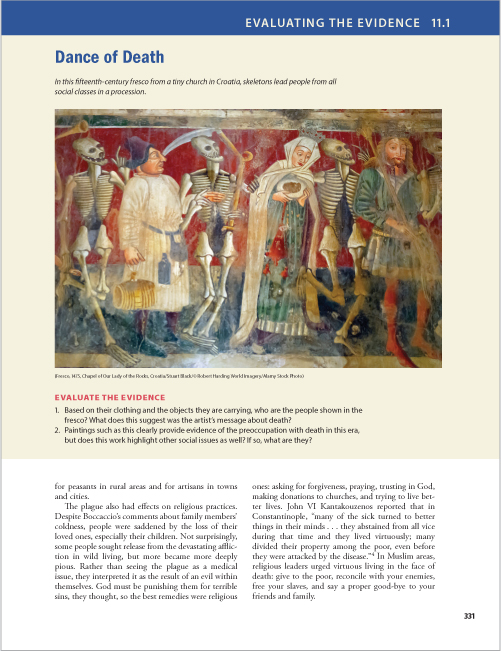
Pay close attention to Evaluating the Evidence. The guided questions included with these visual and written sources help you hone your AP® historical thinking skills by examining one or two sources at a time. This is an important skill for learning history and succeeding on the AP® exam.
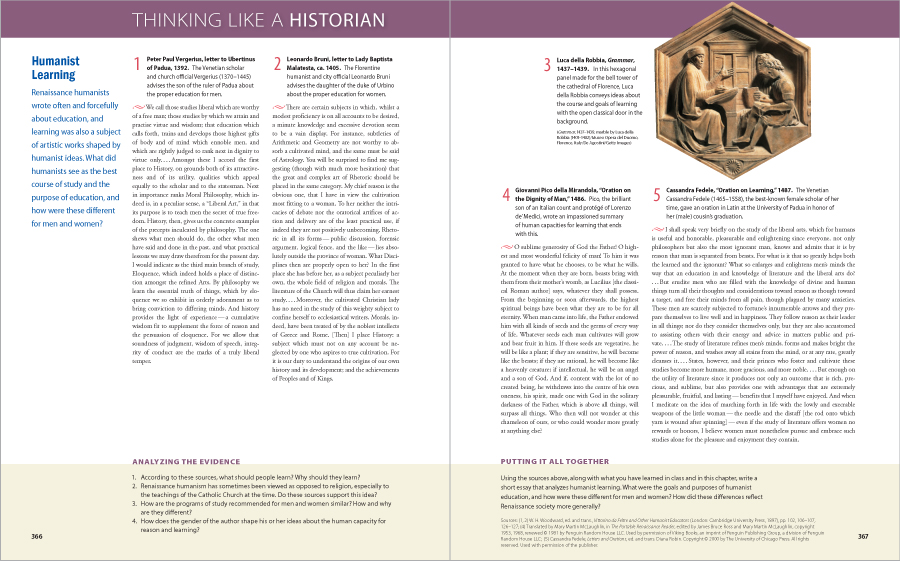
Practice Thinking Like a Historian in each chapter. This important feature offers practice for the comprehensive Document-Based Question on the AP® exam. Questions included with this feature help you analyze the evidence and develop your argument.
Practice for the AP® Exam
Page xxix
Use the following tools in this course and on the AP® European History exam.
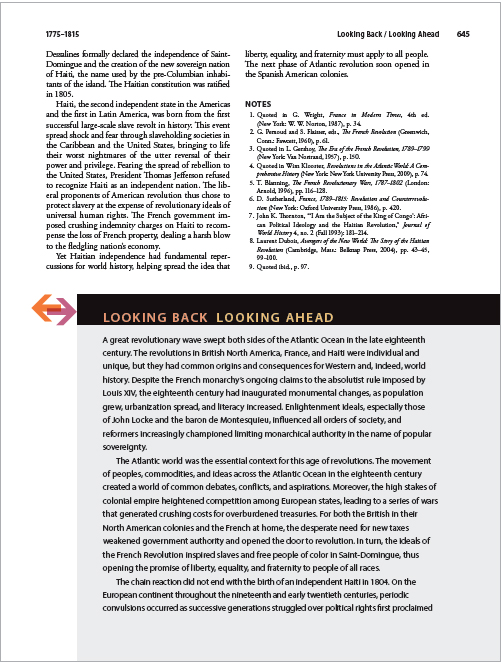
Review the chapter you just read and prepare for the next with Looking Back, Looking Ahead. This feature is more than simple summaries. It provides an interpretation of the chapter’s main developments while introducing upcoming events, so you can see history as an ongoing process of interrelated events, just as historians do.
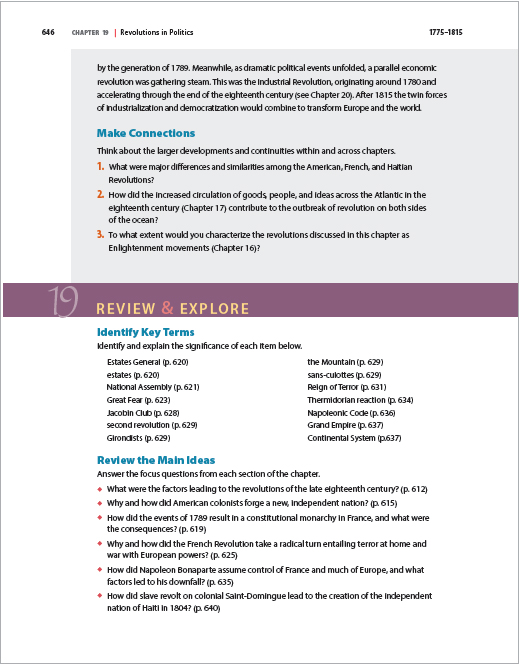
Finally, answer the questions at the end of the chapter. The Make Connections and Review the Main Ideas questions ask you to assess larger developments across chapters, which requires you to build your historical thinking skills in the areas in which you will be tested on the AP® exam.
Page xxx
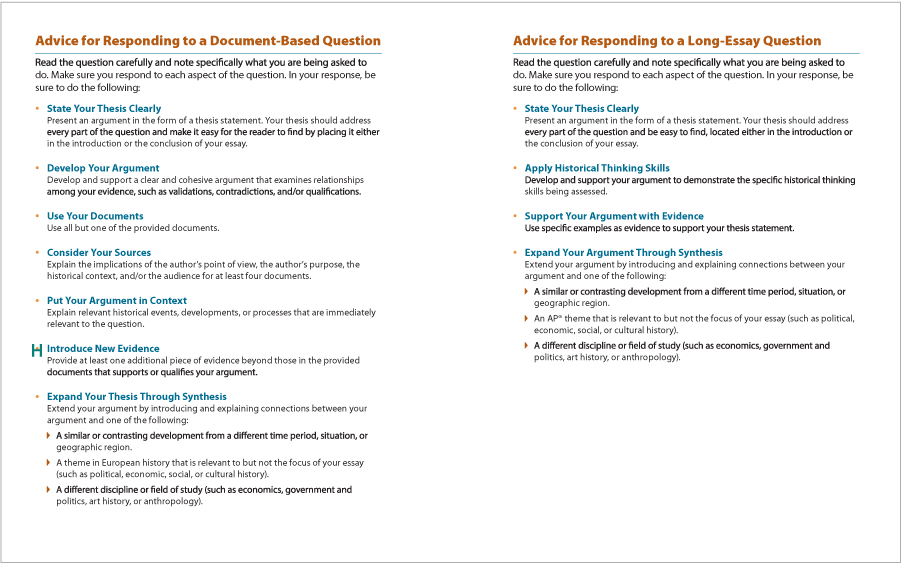
To build your thought processes, writing skills, and exam readiness, use the Advice Pages on the inside back cover of this text. These questions will also help you answer Thinking Like a Historian and Make Connections questions.
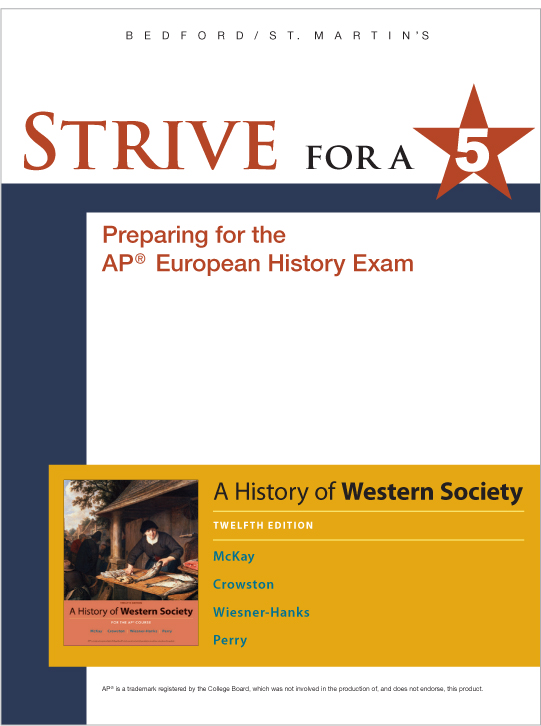
Use the accompanying Strive for a 5: Preparing for the AP® European History Exam for a study guide as you work your way through the course and for exam preparation as you near the exam in May.
Page xxxi
Find e-Books, course management systems, and more online resources with our unique multimedia products.
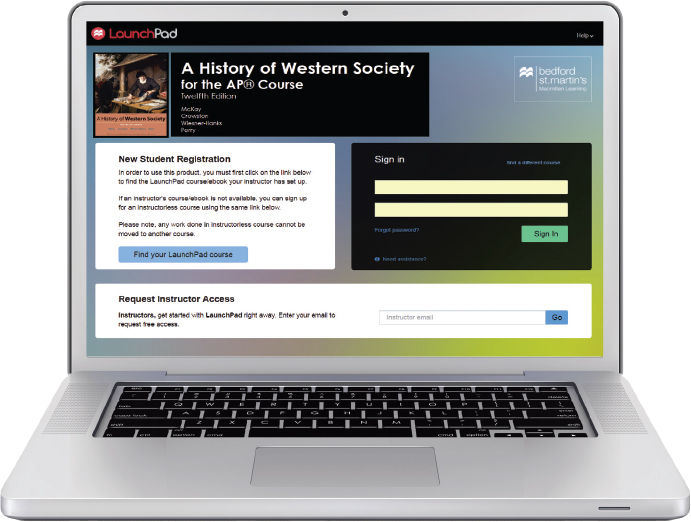
Our learning management systems offer you premium resources in a convenient, online platform. With curated learning modules, extended student tools, and an integrated gradebook, we offer a one-stop shop for an online or blended course.
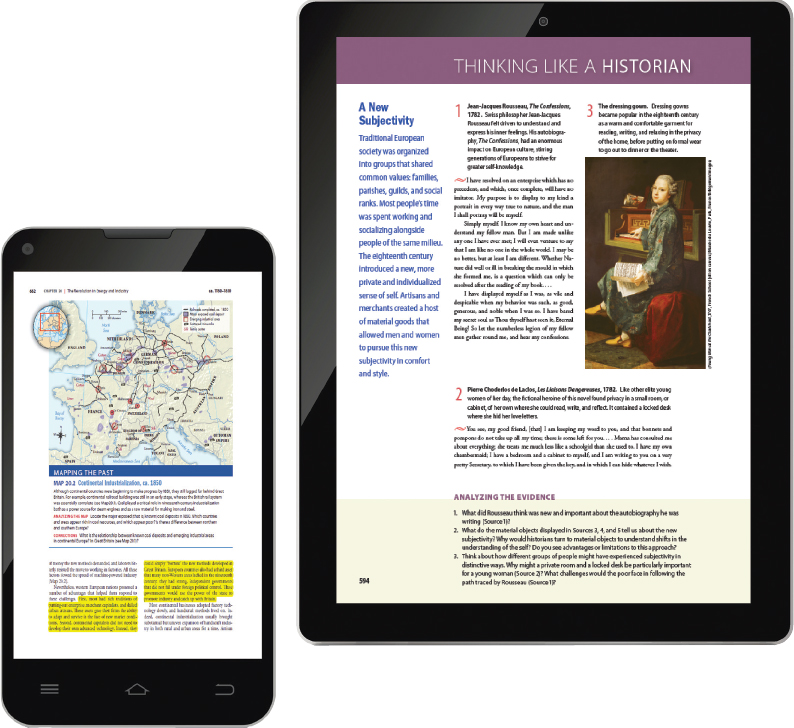
Need a flexible, downloadable e-Book? Contact us for the latest digital options to support this text on your device of choice.














